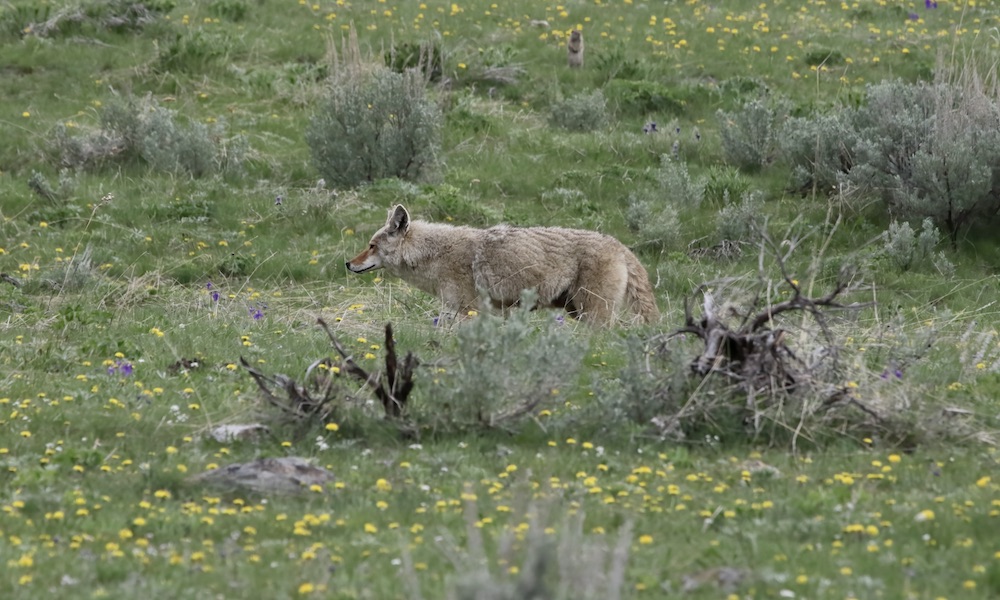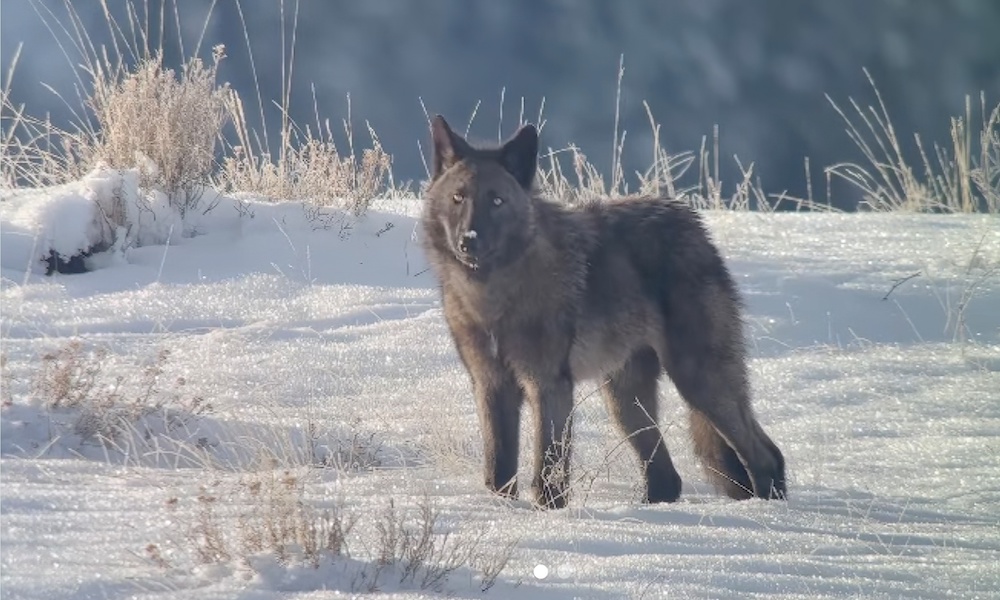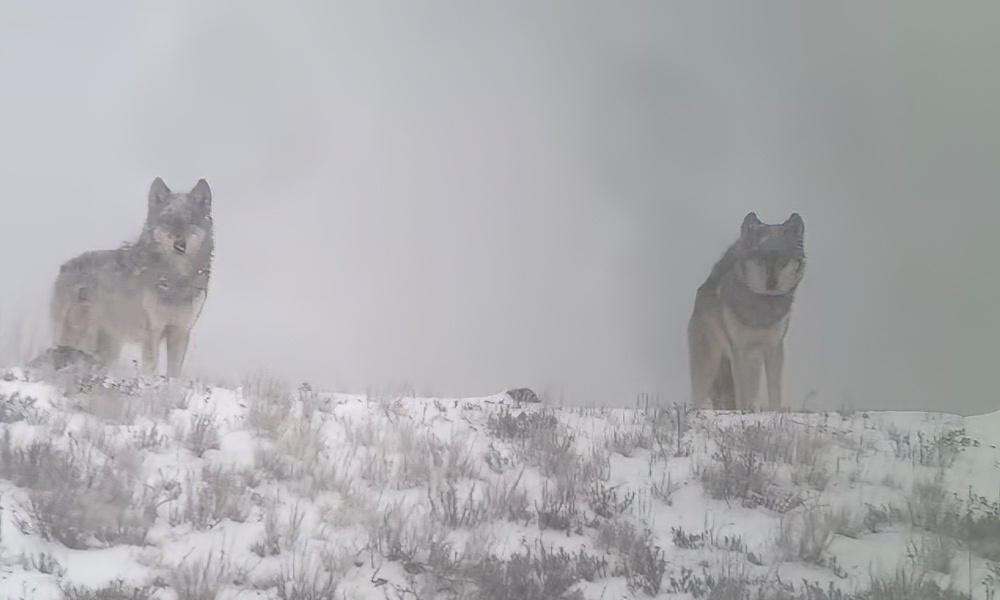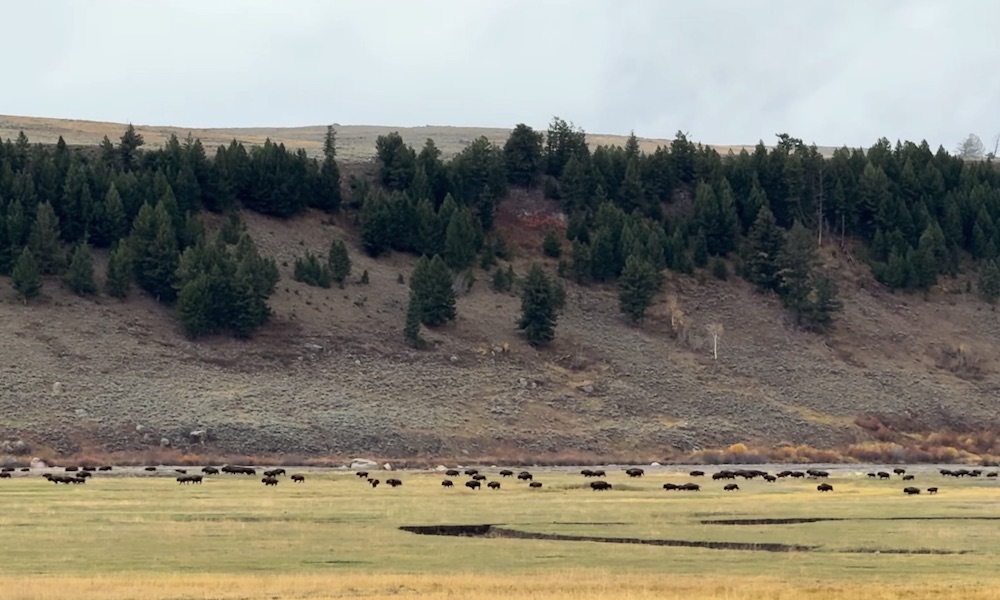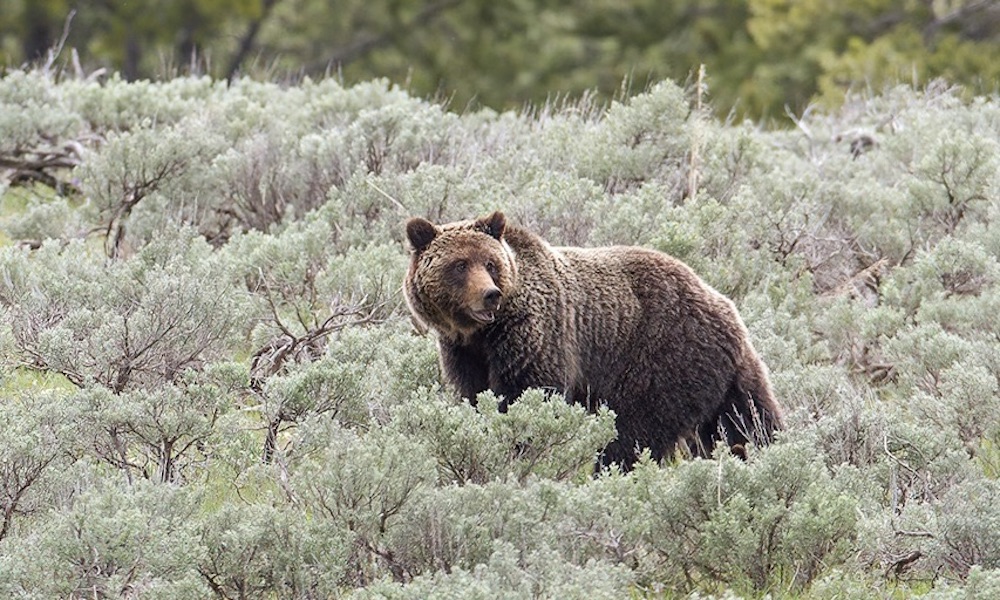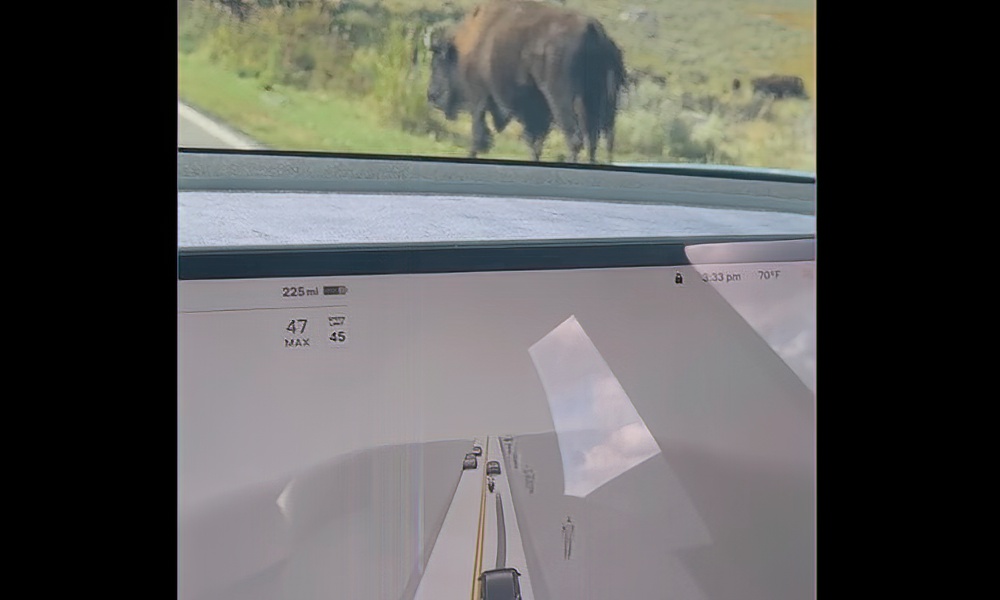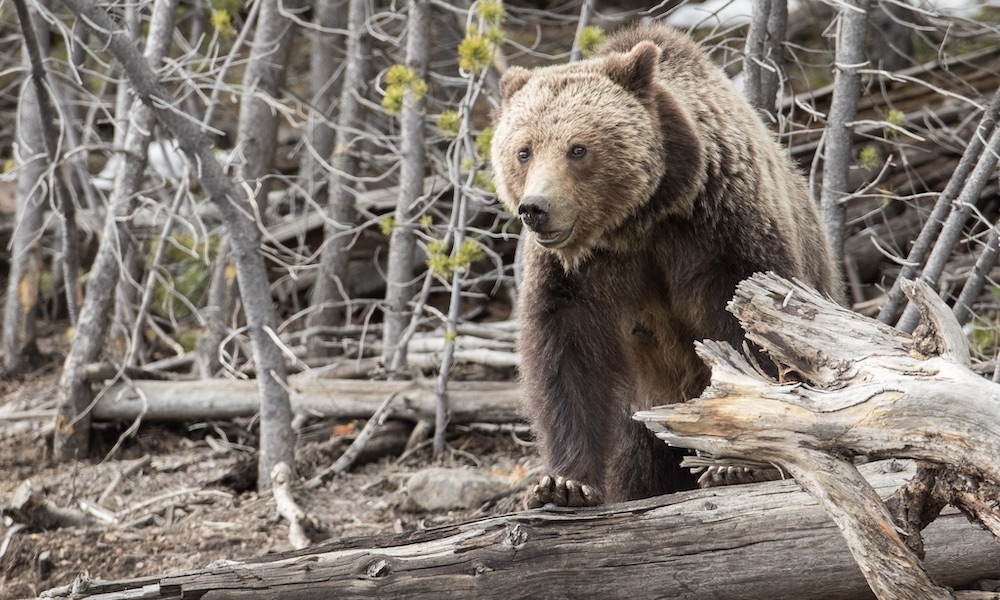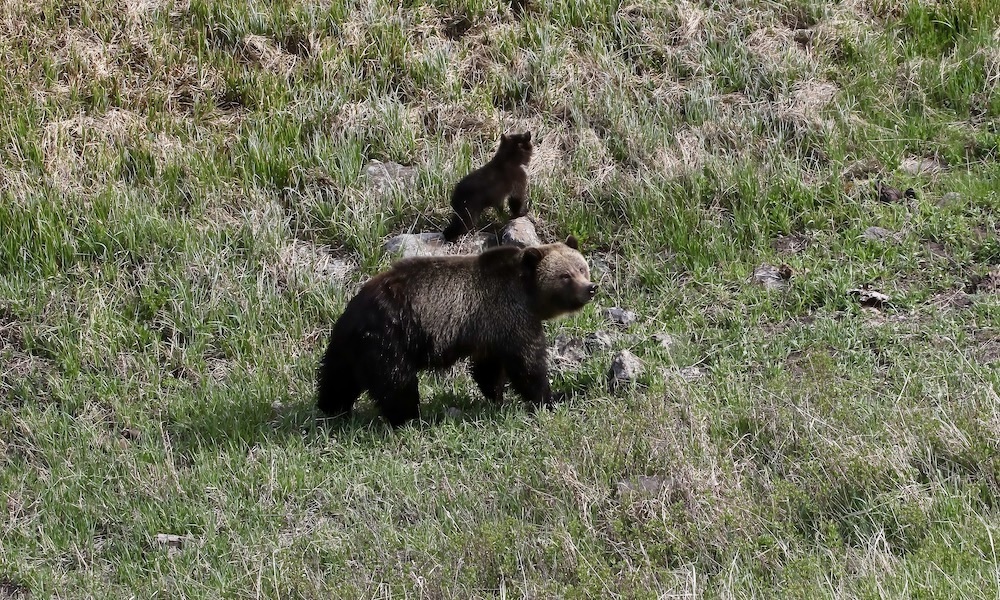Last May in Yellowstone National Park I observed more bears in three days (14) than I observed during all prior trips later in the season.
I spent hours in “bear jams,” standing outside my vehicle while trying to spot and photograph bruins at various safe distances.
During one sighting, involving a cinnamon-colored black bear and two cubs, I looked back across the highway and spotted a coyote trotting behind the mass of cars and people.

I snapped a photo before turning back to face the bears. It wasn’t until hours later, while checking my images, that I noticed another critter closely watching the coyote.
The image is posted above and a question for readers: How quickly can you spot the critter? (Answer below.)
Most photographers expressed only a passing interest in the coyote; they were laser-focused on the bears.

Momma bear was large and her coat lustrous. She napped briefly while her cubs scampered up a tree and hid in the branches.
Some argued that she was a grizzly because she was not black like most black bears. Others noted that she had the face and pointed ears of a black bear, and lacked the telltale grizzly bear shoulder hump.
Almost all spectators were outside their vehicles and some were in violation of the park’s 100-yard distance rule.

As more people crept closer for better photo opportunities, the bear management team shut down the viewing session and ordered everyone to leave.
The tourists complied. But as often happens in Yellowstone, many returned within minutes after the bear management team had departed. I saw the new jam forming after turning around and driving past the sighting area, then continued east toward Tower-Roosevelt.
My good fortune continued when another momma black bear (with black fur) and two cubs emerged along the side of the road, where they foraged on grass.

I photographed them for several minutes before a crowd began to gather, then I continued east into Lamar Valley.
The coyote remained an afterthought until I was back in my hotel room in Gardiner. I almost disregarded the image but noticed the ground squirrel at the top of the frame, intently watching the squirrel-eating coyote.
The squirrel is circled in red in the image posted above.
